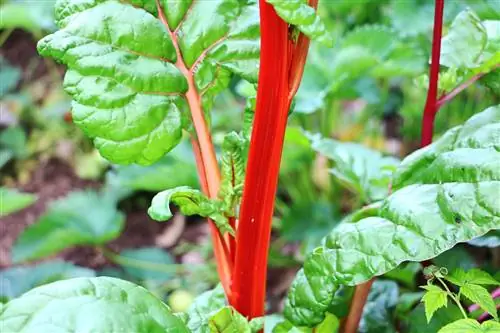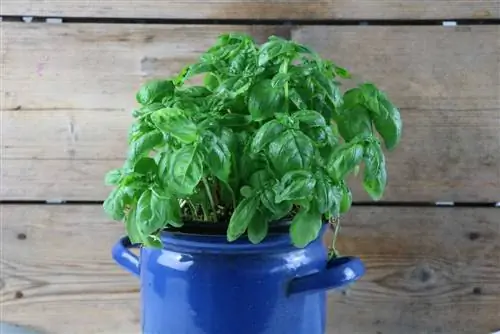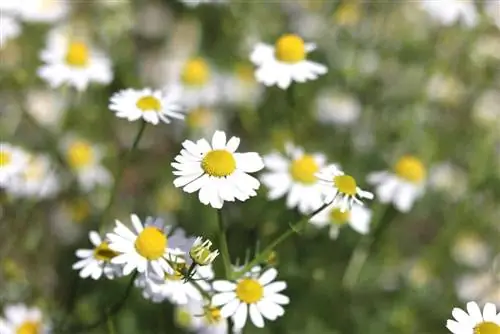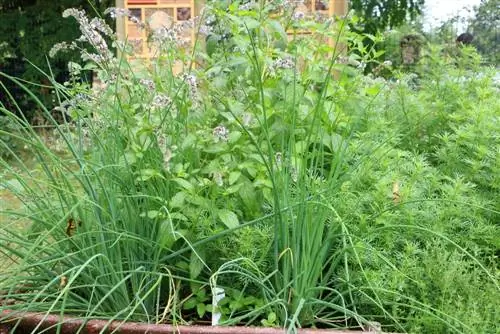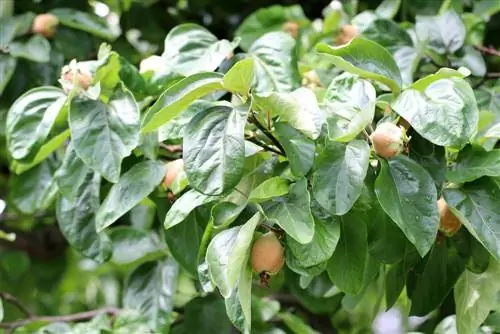- Author admin [email protected].
- Public 2023-12-17 03:39.
- Last modified 2025-01-24 12:45.
Herbs are becoming increasingly popular, they spice up almost every dish and can be combined in any way. In order to be able to enjoy them for a long time, you should pay attention to a few things when cutting and harvesting.
Cut herb plants correctly
Regular pruning ensures that perennial herbs in particular do not become too woody, sprout better, are kept in shape and he althy. Basically, the cut depends on the growth habit. A distinction is therefore made between annual and biennial herbs, herbaceous perennials and subshrubs.
Annual and biennial species
Annual and biennial culinary herbs are cut for immediate use and/or preservation. Despite everything, they can be given some shape through regular harvest pruning, such as: B. Borage and some types of parsley.
- Shape borage by cutting off the main shoot
- resulting in the formation of new side shoots
- grows back bushier and more compact
- Parsley plants regularly cut off about a third of their area
- In general, cut shoots of one- and two-year-old herbs directly above growth nodes
- ideally every few weeks
- usually all summer long
In contrast to annual species, biennials only develop a rosette of leaves in the first year. Flower stems and seeds are only formed in the second year. For example, caraway, parsley and celery are biennial. Annuals include: Chamomile, dill, borage, basil, coriander and savory.
Herb perennials
Herbaceous perennials differ from subshrubs primarily in that they grow in a soft, herbaceous manner and do not become woody. Their above-ground parts die off year after year and the roots overwinter in the ground. They sprout again the following spring.
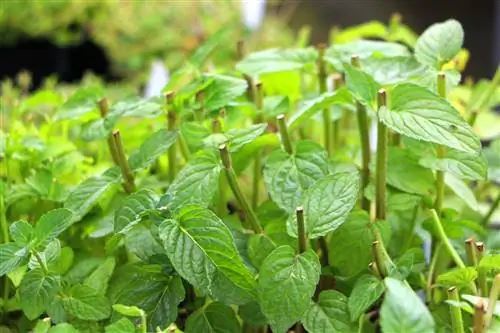
- best time to prune in late autumn
- cut off all shoots two to three centimeters above the ground
- Leave clippings on the ground as winter protection
- Cutting mint and lemon balm in early spring
- during bud setting
- about ten centimeters of green should remain
- otherwise the plant will die
Tip:
This type of herbs includes, among others: Mint, lemon balm, sage, lovage, chives and oregano.
Perennial subshrubs
Subshrubs tend to become woody over the years, especially in the lower areas. To prevent them from aging and falling apart, regular pruning is essential. This group includes, for example, lavender, sage, rosemary, thyme and curry herb.
- first cut usually in August/September, shortly after flowering
- only cut off flower stems with some leaves on them
- shorten by about a third
- second cut in spring after overwintering
- as soon as there is no longer any danger of frost
- Now cut back shoots by one to two thirds
- don't cut into the old wood
Herbal examples
- Cleaning out lavender and sage in summer
- until the next pair of he althy leaves
- Form lavender and curry herb in summer
- and cut back heavily in spring
- Always prune rosemary after flowering
- up to a few centimeters from the old wood
- cut off newly formed young shoots in autumn
To promote leaf growth, it is advisable to remove the flowers early, regardless of their growth habit. If you always harvest whole shoots, you can counteract premature or progressive woodiness.

Rejuvenate old shrubs
If subshrubs are neglected for a long time and not trimmed for years, they will age. Old shoots become bald, fall apart and form brooms at their ends. At their base they hardly produce any young shoots and only a few flowers. In these cases, rejuvenation pruning is recommended, which the majority of these sub-shrubs tolerate well. Pruning is carried out in the spring before budding and only in the leafy area. Cuts into woody or leafless parts should be avoided at all costs. The green parts are shortened by about half.
Pruning in case of illness
If the herbaceous plants are affected by a disease or parasites, radical pruning is usually recommended. The plants are shortened by a third or a maximum of half. In addition, all dead and diseased branches and leaves are removed. Large, he althy leaves at the bottom should remain on the plant in order to absorb sufficient sunlight.
Right time
Many herb lovers simply harvest their culinary herbs as needed, which is completely fine. However, the correct harvest time has a significant influence on their aroma and taste. Therefore, it is advisable to take these into account.
- Aroma is usually most intense before flowering
- The aromas change as the buds form
- will be completely lost at some point
- Harvest still possible after flowering
- Let herbs soak up sun for two to three days before harvesting
- on harvest day, allow the dew on the leaves to dry completely
- Wait for a day with dry weather
- The quality of the herbs suffers in rainy weather
- when harvesting in spring, wait for a frost-free day
- harvest Mediterranean herbs, herbs, teas and seeds in summer
- also choose a sunny day to harvest flowers
- Harvest seeds as soon as seed heads begin to dry
Herbal examples
- Harvesting time for parsley from late spring
- Chives from May to October
- Peppermint starting to form buds
- Sage and dill from around the end of May to October
- Savory all summer long, ideally when flowering
- Thyme and oregano all summer long
- Oregano also during flowering
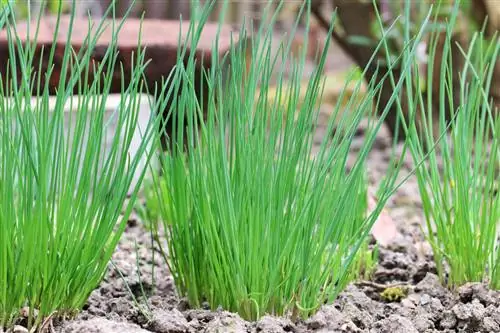
Tip:
Basically, you shouldn't harvest more than ten percent at once so that the plant can regenerate quickly. Evergreen herbs can even be harvested in winter, albeit hesitantly.
Procedure
When harvesting herbs, only sufficiently sharp and clean cutting tools should be used. This is intended to prevent the transmission of fungi and bacteria as well as injuries and bruising to remaining plant parts. Individual leaves, shoot tips or entire shoots are harvested. Large leaves are usually plucked off and, for species with small leaves, whole shoots are usually harvested.
- Basil, cut off shoot tips above a leaf axil
- Dill always whole shoots
- Marjoram if necessary, harvest about half of a branch
- Types of parsley continually harvest individual leaves or whole stems
- Peppermint, cut whole stems just above the ground
- Rosemary, cut off small branches
- Sage, the young shoot tips just above the woody base
- Cut off several stems of chives just above the ground
- Blooms quickly, so harvest regularly
- Thyme, cut shoots so that some green remains on the stem
- or just the shoot tips
Tip:
When it comes to parsley plants, you should note that both the leaves and the flowers are dangerous to he alth above a certain amount.


